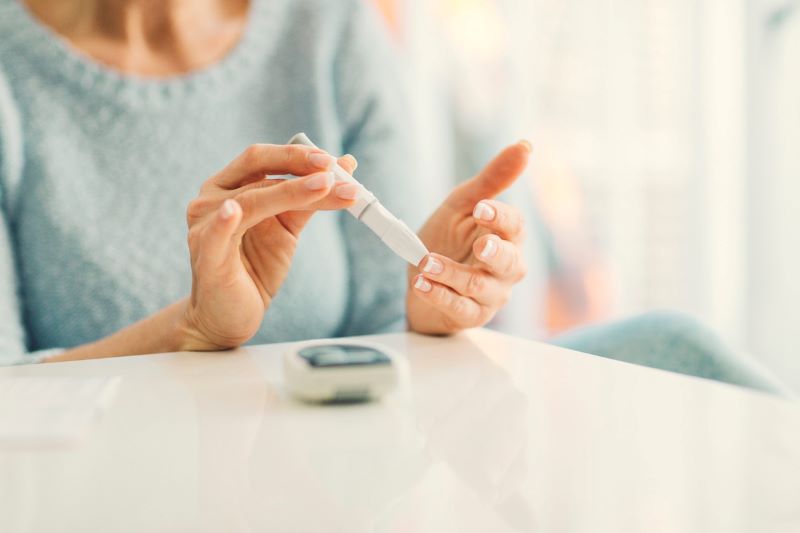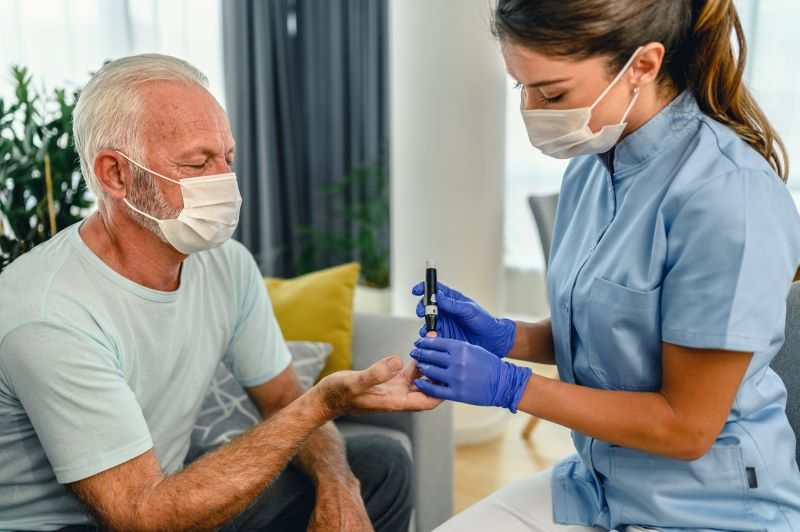Just about everyone knows someone that is diagnosed with diabetes, is diagnosed themselves, or has heard that they might be at risk. While causes can vary, this very serious disease can create numerous complications to your health or can contribute to severe complications down the road, such as diabetic ketoacidosis.
Which may have you wondering, what exactly is it, and can it be prevented?
Learning more about this disease can help you catch early signs of development and reduce factors that can cause the different types. Our healthcare professionals share what you need to know about causes, symptoms, and treatment options.

What Is Diabetes?
Diabetes is a disease1 that affects how your body regulates blood sugar and how well it breaks down the food you eat to use for energy. All types indicate a problem in your system to inadequately produce or respond to insulin, resulting in high blood sugar levels. Insulin is the hormone that helps alert the body to use blood sugar for energy in cells.
When there is a lack of insulin, or the body doesn’t use insulin properly, too much glucose remains in the bloodstream and can cause significant health problems such as:
- Nerve damage (diabetic neuropathy)
- Heart disease
- Kidney disease
- Eye damage
- Hearing problems
- Depression
- Alzheimer’s disease
- Skin conditions
Most of these conditions happen when people with diabetes struggle with the disease over a long period of time. These conditions develop slowly but may increase over the duration of the disease.
Who Is Most at Risk?
Risk varies with each type. As with many health-related problems, being overweight, consuming a nutrient-poor diet, and not enough exercise can put you at a higher risk of developing the disease. Read on for some common types and factors that place people at greater risk.
If you need help with diabetic care or dialysis, we’re here to help! Talk to one of our caring professionals today to see what we offer.
What Is Type 2 Diabetes?
Type 2 is the most common diagnosis for this disease in the U.S. Approximately 90-95%¹ of cases are people with Type 2 diabetes. While usually seen later in life, it can sometimes occur in children and results from too much sugar in the bloodstream.
Type 2 Symptoms
Symptoms of Type 2 diabetes include:
- Thirst
- Unexplained bedwetting/more frequent urination
- Weight Loss
- Fatigue
- Blurry vision
- Intense hunger
- Slow-healing sores
- Frequent infections
- Numbness or tingling in the hands or feet
- Darkened areas of the skin, usually in the armpits and neck
Type 2 Causes
Causes for Type 2 aren’t exactly clear, but obesity and an inactive lifestyle seem to be contributing factors that result in two main problems in the body:
- Cells in the body become resistant to insulin and don’t take in enough sugar.
- The pancreas is unable to produce enough insulin to maintain proper blood sugar levels.
Type 2 Treatments
Early on, a diagnosis may not require supplemental insulin if managed in other ways such as losing weight, improving diet, and exercising more. If the disease progresses, insulin may eventually become necessary.

What Is Type 1 Diabetes?
Between 5-10% of people2 are diagnosed with Type 1 diabetes. This type is a chronic condition, also known as juvenile diabetes, usually seen in younger children and adolescents. It can come on quickly and with minimal warning.
Type 1 Symptoms
Symptoms for people with Type 1 may include:
- Thirst
- Unexplained bedwetting/more frequent urination
- Weight Loss
- Irritability/Moody
- Tired and weak
- Blurry vision
- Intense hunger
Type 1 Causes
For people with Type 1, an autoimmune reaction causes the body to stop making insulin. Essentially the immune system attacks cells in the body and inhibits insulin production. There is no known prevention, but it may be caused by:
- Genetics
- Viruses
Treatments
Treatments for Type 1 focus on managing insulin levels, often with daily shots, an insulin pump, or oral diabetes medications, and maintaining a healthy diet and weight to prevent other complications.
Have questions about treatment or care? We’re here to help! Speak with one of our experienced professionals today.
What Is Gestational Diabetes?
Around 10% of women3 who are pregnant are diagnosed with gestational diabetes every year in the U.S. For most pregnant women, it is a temporary condition that resolves once the baby is born. However, women with gestational diabetes need to be monitored week to week of pregnancy as it can affect the health of both the mother and child.
The only way to know if this condition is present is through a blood test. Without treatment, problems may occur for the baby, such as:
- Excessive birth weight
- Low blood sugar at birth
- Increased risk of Type 2 diabetes later in life
- Preterm birth
- Respiratory distress syndrome

Gestational Diabetes Symptoms
Increased hormones in a woman’s body during pregnancy can inhibit the body’s ability to absorb insulin. This condition, insulin resistance, makes it difficult for the mother’s body to absorb enough insulin. Symptoms may include:
- Dry mouth
- Fatigue
- Thirst
Gestational Diabetes Treatment
As with other types, treatments focus on managing blood sugar levels and living a healthy lifestyle. Your doctor may also recommend these steps:
- Limiting sugar or carbs
- Keeping a food journal
- Monitoring blood sugar levels at home
- Healthy eating and physical activity
- Additional doctor appointment during pregnancy to monitor blood sugar levels
Is Diabetes Preventable?
In all instances of this disease, maintaining a healthy weight, eating well, and exercising can help prevent diabetes or, in the case of Type 1, delay the onset. While there is not much a person can do to prevent Type 1 since it appears to be related to genetics, there are ways to reduce risk factors and the likelihood of Type 2 and gestational diabetes by:
- Maintaining a healthy weight. If you are overweight, try to lose the weight and keep it off.
- Exercising. Try to get in more movement for at least 30 minutes, five times a week.
- Eating healthy most of the time. Choose more nutritious foods, and limit sugar and carbohydrates.
Diabetes can have a severe effect on your health. Taking care of the things within your control is crucial in preventing or postponing the onset. Committing to a healthy lifestyle and monitoring your blood sugar levels are vital in preventing further complications.
If you need care for diabetic wounds or dialysis due to diabetes-related kidney disease, contact our team today to learn how you can get the support you need.
Sources:
1Centers for Disease Control and Prevention (CDC). (16 December 2021). What is Diabetes? Retrieved 17 February 2022.
2Nichols, H. (8 July 2021). What are the differences between type 1 and type 2 diabetes? Medical News Today. Retrieved 17 February 2022.
3merican Diabetes Association (ADA). Gestational Diabetes. Retrieved 17 February 2022.